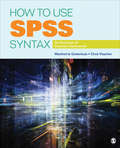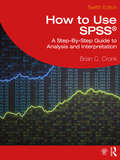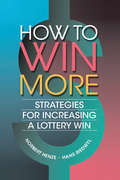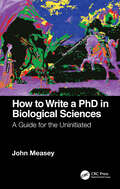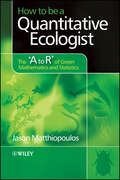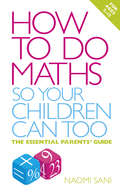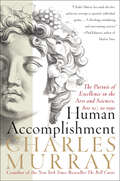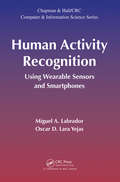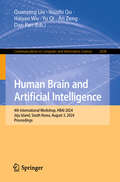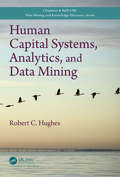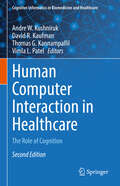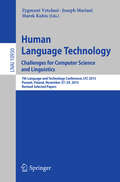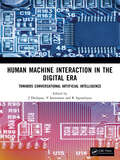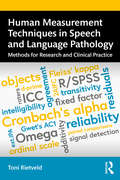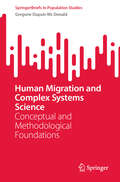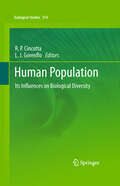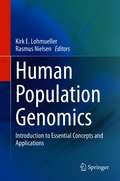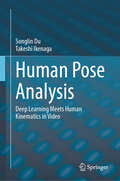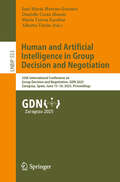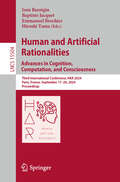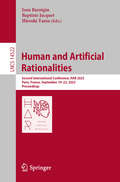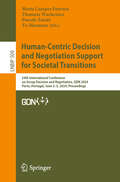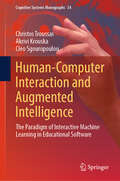- Table View
- List View
How to Think Like a Mathematician
by Kevin HoustonLooking for a head start in your undergraduate degree in mathematics? Maybe you've already started your degree and feel bewildered by the subject you previously loved? Don't panic! This friendly companion will ease your transition to real mathematical thinking. Working through the book you will develop an arsenal of techniques to help you unlock the meaning of definitions, theorems and proofs, solve problems, and write mathematics effectively. All the major methods of proof - direct method, cases, induction, contradiction and contrapositive - are featured. Concrete examples are used throughout, and you'll get plenty of practice on topics common to many courses such as divisors, Euclidean algorithms, modular arithmetic, equivalence relations, and injectivity and surjectivity of functions. The material has been tested by real students over many years so all the essentials are covered. With over 300 exercises to help you test your progress, you'll soon learn how to think like a mathematician.
How to Use SPSS Syntax: An Overview of Common Commands
by Chris Visscher Manfred te GrotenhuisRather than focusing on SPSS menus and the graphic user interface, How to Use SPSS Syntax focuses on the syntax rules in SPSS, a more encompassing approach that allows readers to replicate statistical analyses by storing them in a file for future use. Practical, accessible, and highly focused, the book is brief, while still helping readers develop an in-depth understanding of the common syntax rules and commands. In every chapter, the authors clearly explain the syntax, show the main results, and include social science research examples and downloadable files that allow readers to follow along. Checks throughout the book help readers determine whether the syntax is used correctly.
How to Use SPSS Syntax: An Overview of Common Commands
by Chris Visscher Manfred te GrotenhuisRather than focusing on SPSS menus and the graphic user interface, How to Use SPSS Syntax focuses on the syntax rules in SPSS, a more encompassing approach that allows readers to replicate statistical analyses by storing them in a file for future use. Practical, accessible, and highly focused, the book is brief, while still helping readers develop an in-depth understanding of the common syntax rules and commands. In every chapter, the authors clearly explain the syntax, show the main results, and include social science research examples and downloadable files that allow readers to follow along. Checks throughout the book help readers determine whether the syntax is used correctly.
How to Use SPSS®: A Step-By-Step Guide to Analysis and Interpretation
by Brian C. CronkHow to Use SPSS® is designed with the novice computer user in mind and for people who have no previous experience using SPSS. Each chapter is divided into short sections that describe the statistic being used, important underlying assumptions, and how to interpret the results and express them in a research report. The book begins with the basics, such as starting SPSS, defining variables, and entering and saving data. It covers all major statistical techniques typically taught in beginning statistics classes, such a descriptive statistics, graphing data, prediction and association, parametric inferential statistics, nonparametric inferential statistics and statistics for test construction. More than 275 screenshots (including sample output) throughout the book show students exactly what to expect as they follow along using SPSS. The book includes a glossary of statistical terms and practice exercises. A complete set of online resources including video tutorials and output files for students, and PowerPoint slides and test bank questions for instructors, make How to Use SPSS® the definitive, field-tested resource for learning SPSS. New to this edition: Fully updated to the reflect SPSS version 29. Every screen shot has been recaptured. New video supplements for all practice exercises. References to significance levels have been updated to reflect the new SPSS output format. Effect size is now shown in output for many procedures and reference to some effect size has been moved from Appendix A to be more integrated into the chapters. Sample results sections now also include effect size where SPSS directly calculates effect size. A new section covering the EXPLORE command has been added to Chapter 3.
How to Win More: Strategies for Increasing a Lottery Win
by Norbert Henze Hans RiedwylThis book is designed to provide valuable insight into how to improve the return on your investment when playing the lottery. While it does not promise that you will win more often, it does show you how to improve the odds of winning larger amounts when your numbers do come up. So, when you do win that million-dollar jackpot, you will be less likel
How to Write a PhD in Biological Sciences: A Guide for the Uninitiated
by John MeaseyYou don’t have to be a genius to write a PhD. Of course, it will always involve a lot of hard work and dedication, but the process of writing is a whole lot easier if you understand the basic ground rules. This book is a guide through the dos and don’ts of writing a PhD. It will be your companion from the point when you decide to do a PhD, providing practical guidance to getting started, all the way through the nuts and bolts of the writing and editing process. It will also help you to get - and stay - in the right mental framework and establish good habits from the beginning, putting you in a commanding position later on. Examples are tailored to the biological sciences, offering a unique reference for PhD students in these disciplines. Embarking on a PhD doesn’t need to be daunting, even if it’s your first experience working within academia. Each short section focuses on writing - considered by many to be the most difficult aspect of a PhD - and delves into a practical detail of one aspect, from the title to the supplementary material. Whether you’re a student just starting your studies, an early career researcher or a supervisor struggling to cope, the book provides the insider information you need to get ahead.
How to be a Quantitative Ecologist: The 'A to R' of Green Mathematics and Statistics
by Jason MatthiopoulosEcological research is becoming increasingly quantitative, yet students often opt out of courses in mathematics and statistics, unwittingly limiting their ability to carry out research in the future. This textbook provides a practical introduction to quantitative ecology for students and practitioners who have realised that they need this opportunity. The text is addressed to readers who haven't used mathematics since school, who were perhaps more confused than enlightened by their undergraduate lectures in statistics and who have never used a computer for much more than word processing and data entry. From this starting point, it slowly but surely instils an understanding of mathematics, statistics and programming, sufficient for initiating research in ecology. The book's practical value is enhanced by extensive use of biological examples and the computer language R for graphics, programming and data analysis. Key Features: Provides a complete introduction to mathematics statistics and computing for ecologists. Presents a wealth of ecological examples demonstrating the applied relevance of abstract mathematical concepts, showing how a little technique can go a long way in answering interesting ecological questions. Covers elementary topics, including the rules of algebra, logarithms, geometry, calculus, descriptive statistics, probability, hypothesis testing and linear regression. Explores more advanced topics including fractals, non-linear dynamical systems, likelihood and Bayesian estimation, generalised linear, mixed and additive models, and multivariate statistics. R boxes provide step-by-step recipes for implementing the graphical and numerical techniques outlined in each section. How to be a Quantitative Ecologist provides a comprehensive introduction to mathematics, statistics and computing and is the ideal textbook for late undergraduate and postgraduate courses in environmental biology.
How to do Maths so Your Children Can Too: The essential parents' guide
by Naomi SaniDoes the sight of your child's maths homework fill you with dread? Do you look for any excuse when they ask you to explain equations, fractions or multiplication? Maths can often leave children - and parents - perplexed.How to do Maths so Your Children Can Too works through maths topics with a simple step-by-step approach, explaining the new ways of teaching maths that confuse so many parents. This book will show you how to:- Master 'number bonds' and 'number lines'- Divide by 'chunking'- Multiply using 'the grid method'- Work with fractions, percentages and ratios- Understand number and place valueBridging the gap between primary and secondary school - when children often struggle - and packed full of simple, accessible examples, this essential guide will banish your maths phobia and take the pain out of homework time.
Human Accomplishment: The Pursuit of Excellence in the Arts and Sciences, 800 B.C. to 1950
by Charles Murray“Readers . . . are sure to enjoy [the] arguments and elegant presentation” of this “engaging” cultural survey by the controversial co-author of The Bell Curve (Kirkus Reviews).“At irregular times and in scattered settings, human beings have achieved great things. Human Accomplishment is about those great things, falling in the domains known as the arts and sciences, and the people who did them.’So begins Charles Murray’s unique account of human excellence, from the age of Homer to our own time. Murray compiles inventories of the people who have been essential to the stories of literature, music, art, philosophy, and the sciences—a total of 4,002 men and women from around the world, ranked according to their eminence.The heart of Human Accomplishment is a series of enthralling descriptive chapters: on the giants in the arts and what sets them apart from the merely great. Charles Murray takes on some controversial questions. Why has accomplishment been so concentrated in Europe? Among men? Since 1400? He presents evidence that the rate of great accomplishment has been declining in the last century, asks what it means, and offers a rich framework for thinking about the conditions under which the human spirit has expressed itself most gloriously. “Well-written and informative.” —Publishers Weekly
Human Activity Recognition: Using Wearable Sensors and Smartphones (Chapman & Hall/CRC Computer and Information Science Series)
by Miguel A. Labrador Oscar D. Lara YejasLearn How to Design and Implement HAR Systems The pervasiveness and range of capabilities of today's mobile devices have enabled a wide spectrum of mobile applications that are transforming our daily lives, from smartphones equipped with GPS to integrated mobile sensors that acquire physiological data. Human Activity Recognition: Using Wearable Sen
Human Brain and Artificial Intelligence: 4th International Workshop, HBAI 2024, Jeju Island, South Korea, August 3, 2024, Proceedings (Communications in Computer and Information Science #2438)
by An Zeng Dan Pan Quanying Liu Youzhi Qu Haiyan Wu Yu QiThis book constitutes the refereed proceedings of the 4th International Workshop on Human Brain and Artificial Intelligence, HBAI 2024, held in Jeju Island, South Korea, on August 3, 2024.The 24 full papers and 5 short papers included in this book were carefully reviewed andselected from 74 submissions. They were organized in topical sections as follows: AI for brain science; AI for brain technology; and brain-inspired AI.
Human Capital Systems, Analytics, and Data Mining (Chapman & Hall/CRC Data Mining and Knowledge Discovery Series)
by Robert C. HughesHuman Capital Systems, Analytics, and Data Mining provides human capital professionals, researchers, and students with a comprehensive and portable guide to human capital systems, analytics and data mining. The main purpose of this book is to provide a rich tool set of methods and tutorials for Human Capital Management Systems (HCMS) database modeling, analytics, interactive dashboards, and data mining that is independent of any human capital software vendor offerings and is equally usable and portable among both commercial and internally developed HCMS. The book begins with an overview of HCMS, including coverage of human resource systems history and current HCMS Computing Environments. It next explores relational and dimensional database management concepts and principles. HCMS Instructional databases developed by the Author for use in Graduate Level HCMS and Compensation Courses are used for database modeling and dashboard design exercises. Exciting knowledge discovery and research Tutorials and Exercises using Online Analytical Processing (OLAP) and data mining tools through replication of actual original pay equity research by the author are included. New findings concerning Gender Based Pay Equity Research through the lens Comparable Worth and Occupational Mobility are covered extensively in Human Capital Metrics, Analytics and Data Mining Chapters.
Human Computer Interaction in Healthcare: The Role of Cognition (Cognitive Informatics in Biomedicine and Healthcare)
by Vimla L. Patel Thomas G. Kannampallil David R. Kaufman Andre W. KushnirukThis thoroughly updated edition reports on the current state of human computer interaction (HCI) in biomedicine and healthcare, focusing on the cognitive underpinnings of human interactions with people and technology. With health information technologies becoming increasingly vital tools for the practice of clinical medicine, this book draws from key theories, models and evaluation frameworks, and their application in biomedical contexts to apply this to current research in HCI. However, numerous challenges remain in order to fully realize their potential as instruments for advancing clinical care and enhancing patient safety. There is a general consensus that health IT has not realized its potential as a tool to facilitate clinical decision-making, the coordination of care and improvements in patient safety. Embracing sound principles of iterative design can yield significant dividends. It can also enhance practitioner’s abilities to meet “meaningful use” requirements. The purpose of the book is two-fold: to address key gaps on the applicability of theories, models and evaluation frameworks of HCI and human factors for research in biomedical informatics. It highlights the state of the art, drawing from the current research in HCI. It also serves as a graduate level textbook highlighting key topics in HCI relevant for biomedical informatics, computer science and social science students working in the healthcare domain. Cognitive Informatics for Biomedicine: Human Computer Interaction in Healthcare is indispensable to those who want to ensure that the systems they build, and the interactive environments that they promote, will reflect the rigor and dedication to human-computer interaction principles that will ultimately enhance both the user’s experience and the quality and safety of the care that is offered to patients. It is an essential reference to all who are interested in the application of these new techniques within healthcare, from students of informatics through to clinicians, informatics researchers and developers of health IT looking to incorporate them into their day-to-day workflow.
Human Language Technology. Challenges for Computer Science and Linguistics: 7th Language and Technology Conference, LTC 2015, Poznań, Poland, November 27-29, 2015, Revised Selected Papers (Lecture Notes in Computer Science #10930)
by Joseph Mariani Zygmunt Vetulani Marek KubisThis book constitutes the refereed proceedings of the 7h Language and Technology Conference: Challenges for Computer Science and Linguistics, LTC 2015, held in Poznan, Poland, in November 2015. The 31 revised papers presented in this volume were carefully reviewed and selected from 108 submissions. The papers selected to this volume belong to various fields of: Speech Processing; Multiword Expressions; Parsing; Language Resources and Tools; Ontologies and Wordnets; Machine Translation; Information and Data Extraction; Text Engineering and Processing; Applications in Language Learning; Emotions, Decisions and Opinions; Less-Resourced Languages.
Human Machine Interaction in the Digital Era: Towards Conversational Artificial Intelligence
by J. Dhilipan V. Saravanan R. AgusthiyarThe Human Machine Interaction in the Digital Era (ICHMIDE) 2023 conference aims to address the main issues of concern in the design issues with a particular emphasis on the design and development of interfaces for autonomous robots. Its main objective is to provide an international forum for the dissemination and exchange of up-to-date scientific information on research related to integrated human/machine systems at multiple scales, and includes areas such as human/machine interaction, engineering mathematical models, assistive technologies, system modelling, design, testing and validation. The organization of ICHMS is based on the following Track types: Smart Applications for Digital Era, Computational Mathematical and Electronics, Intelligent Systems in Security and Communication Technologies, Technological Interventions using AI and Machine Learning, Applied Science, and IoT Techniques for Industries.
Human Measurement Techniques in Speech and Language Pathology: Methods for Research and Clinical Practice
by Rietveld ToniHuman Measurement Techniques in Speech and Language Pathology gives an overview of elicitation methods in the assessment and diagnosis of speech and language disorders and explains approaches to the qualification of the obtained data in terms of agreement and reliability. Despite technological advances in the assessment and diagnosis of speech and language disorders, the role of human judgements is as important as ever. Written to be accessible to students, researchers and practitioners alike, the book not only provides an overview of elicitation procedures of human judgement such as visual analog scaling, Likert scaling etc. but also presents methodological and statistical approaches to quality assessment of judgements. The book introduces statistical procedures for processing scores obtained in paired comparisons and in the context of signal detection theory, and introduces software relevant for the calculation of a large number of coefficients of reliability and agreement. Featuring a wealth of reader-friendly pedagogy throughout, including instructions for using SPSS and R software, clarified by many illustrations and tables, example reports, and exercise questions to test the readers understanding, it is an ideal companion for advanced students and researchers in the field of speech pathology.
Human Migration and Complex Systems Science: Conceptual and Methodological Foundations (SpringerBriefs in Population Studies)
by Gregorie Dupuis-Mc DonaldThis book provides a novel perspective on human migration dynamics by examining it through the lenses of complex systems science and philosophy of science. It posits that human migration is not a simple linear process but rather a dynamic phenomenon driven by a multitude of causal factors evolving within complex systems. This book unravels the conceptual and methodological foundations of a complex systems approach to migration, elucidating its ability to explain the intricate causation inherent in migration processes. Additionally, it acknowledges the constraints and challenges faced when adopting this perspective. The research sets out to answer two fundamental questions: (1) Does migration exhibit the dynamics and properties of a complex system? and (2) What are the distinct advantages of employing a complex systems approach for studying migration? The author argues that a complex systems approach provides an integrated framework that comprehensively captures the multilevel structure of migration processes. By doing so, it enables the identification of causation across various scales and elucidates the emergence of complex properties in migration phenomena. Structured into three comprehensive chapters, this book begins with an introduction to the fundamentals of the complex systems approach to migration. The second chapter critically examines the concept of causality within migration science and offers a comprehensive framework for causal inference. The third chapter expands on the notion of multilevel causation and emergence within complex systems of migration. By examining these fundamental issues, this book shows how philosophy can constructively engage with complex systems modeling in order to meet practical scientific objectives and adress contemporary challenges.
Human Population
by Richard P. Cincotta Larry J. GorenfloIn this volume the dynamic patterns of human density and distribution are examined in relation to the viability of native species and the integrity of their habitats. Social, biological, and earth scientists describe their models, outline their conclusions from field studies, and review the contributions of other scientists whose work is essential to this field. The book starts with general theories and broad empirical relationships that help explain dramatic changes in the patterns of the occurrence of species, changes that have developed in parallel with human population growth, migration and settlement. In the following chapters specific biomes and ecosystems are highlighted as the context for human interactions with other species. A discussion of the key themes and findings covered rounds out the volume. All in all, the work presents our species, Homo sapiens, as what we truly have been and will likely remain--an influential, and often the most influential, constituent in nearly every major ecosystem on Earth.
Human Population Genomics: Introduction to Essential Concepts and Applications
by Rasmus Nielsen Kirk E. LohmuellerThis textbook provides a concise introduction and useful overview of the field of human population genomics, making the highly technical and contemporary aspects more accessible to students and researchers from various fields. Over the past decade, there has been a deluge of genetic variation data from the entire genome of individuals from many populations. These data have allowed an unprecedented look at human history and how natural selection has impacted humans during this journey. Simultaneously, there have been increased efforts to determine how genetic variation affects complex traits in humans. Due to technological and methodological advances, progress has been made at determining the architecture of complex traits. Split in three parts, the book starts with the basics, followed by more advanced and current research. The first part provides an introduction to essential concepts in population genetics, which are relevant for any organism. The second part covers the genetics of complex traits in humans. The third part focuses on applying these techniques and concepts to genetic variation data to learn about demographic history and natural selection in humans. This new textbook aims to serve as a gateway to modern human population genetics research for those new to the field. It provides an indispensable resource for students, researchers and practitioners from disparate areas of expertise.
Human Pose Analysis: Deep Learning Meets Human Kinematics in Video
by Songlin Du Takeshi IkenagaThis book stands at the intersection of computer vision, artificial intelligence, and human kinematics, offering a comprehensive exploration of the principles, methodologies, and applications of human pose analysis in video data. It covers two main aspects: human body pose analysis and human head pose analysis. Human body pose analysis involves estimating the position and orientation of major joints and body parts, such as the head, neck, shoulders, elbows, wrists, hips, knees, and ankles, to capture the entire body posture in 2D or 3D space. In contrast, human head pose analysis focuses solely on the head’s orientation, typically estimating the angles of rotation around the yaw, pitch, and roll axes to determine the direction in which a person is looking or tilting their head. The book is divided into three parts, each detailing recent research in different areas of pose analysis. The first chapter provides an overview of human body and head pose analysis, including the fundamental principles of kinematic representation, as well as commonly used datasets and evaluation metrics. The first part, consisting of Chapters 2 and 3, delves into 2D human body pose analysis. The second part, spanning Chapters 4 through 7, covers the latest advancements in 3D human body pose estimation, focusing on inferring 3D positions and orientations of body joints from 2D images or videos. The third part, covering Chapters 8 and 9, presents recent studies on 3D human head pose analysis, encompassing both 3D head pose estimation and prediction. The final chapter concludes by summarizing the techniques discussed and outlining future research directions and applications in human body and head pose analysis.
Human and Artificial Intelligence in Group Decision and Negotiation: 25th International Conference on Group Decision and Negotiation, GDN 2025, Zaragoza, Spain, June 15–18, 2025, Proceedings (Lecture Notes in Business Information Processing #553)
by Danielle Costa Morais José María Moreno-Jiménez María Teresa Escobar Alberto TurónThis book constitutes the refereed proceedings of the 25th International Conference on Group Decision and Negotiation, GDN 2025, which took place in Zaragoza, Spain, during June 2025. The field of Group Decision and Negotiation focuses on decision processes with at least two participants and a common goal but conflicting individual goals. Research areas of Group Decision and Negotiation include electronic negotiations, experiments, the role of emotions in group decision and negotiations, preference elicitation and decision support for group decisions and negotiations, and conflict resolution principles. The 12 full papers included in these proceedings were carefully reviewed and selected from 99 submissions. They were organized in topical sections as follows: AI, Ethics, and Societal Impact in Group Decision and Negotiation; Preference Modeling, Evaluation, and Decision Support in Group Contexts; and Conflict Modeling in Complex Decision Environments.
Human and Artificial Rationalities. Advances in Cognition, Computation, and Consciousness: Third International Conference, HAR 2024, Paris, France, September 17–20, 2024, Proceedings (Lecture Notes in Computer Science #15504)
by Jean Baratgin Baptiste Jacquet Hiroshi Yama Emmanuel BrochierThis book constitutes the proceedings of the Third International Conference on Human and Artificial Rationalities, HAR 2024, which took place in Paris, France, in September 2024. The 19 full papers and 4 short papers included in this book were carefully reviewed and selected from 52 submissions. They are organized under the following topical sections: Artificial reasoning and models; Moral reasoning; Artificial intelligence and cognition; Rationality and Dual Process; Reasoning and special needs; Education; Experimental procedures in cognition. * This book also contains one additional paper from the HAR 2023 conference.
Human and Artificial Rationalities: Second International Conference, HAR 2023, Paris, France, September 19–22, 2023, Proceedings (Lecture Notes in Computer Science #14522)
by Jean Baratgin Baptiste Jacquet Hiroshi YamaThis book constitutes the proceedings of the Second International Conference on Human and Artificial Rationalities, HAR 2023, which took place in Paris, France, in September 2023. The 18 full and 5 short papers included in this book were carefully reviewed and selected from 39 submissions. They were organized in topical sections as follows: Human and artificial thinking; human thinking and reasoning; neuropsychology and interaction; artificial agents and interaction; and applied reasoning. This volume also contains 2 invited talks in full-paper length.
Human-Centric Decision and Negotiation Support for Societal Transitions: 24th International Conference on Group Decision and Negotiation, GDN 2024, Porto, Portugal, June 3–5, 2024, Proceedings (Lecture Notes in Business Information Processing #509)
by Pascale Zaraté Yu Maemura Marta Campos Ferreira Thomasz WachowiczThis book constitutes the refereed proceedings of the 24th International Conference on Group Decision and Negotiation, GDN 2024, which took place in Porto, Portugal, during June 2–5, 2024. The field of Group Decision and Negotiation focuses on decision processes with at least two participants and a common goal but conflicting individual goals. Research areas of Group Decision and Negotiation include electronic negotiations, experiments, the role of emotions in group decision and negotiations, preference elicitation and decision support for group decisions and negotiations, and conflict resolution principles. The 13 full papers presented in this volume were carefully reviewed and selected from 100 submissions. They were organized in the following topical sections: Conflict Resolution; Preference Modeling for Group Decision and Negotiation; Collaborative and Responsible Negotiation Support Systems and Studies.
Human-Computer Interaction and Augmented Intelligence: The Paradigm of Interactive Machine Learning in Educational Software (Cognitive Systems Monographs #34)
by Christos Troussas Akrivi Krouska Cleo SgouropoulouThis book explores the transformative roles of human-computer interaction (HCI) and augmented intelligence (AI) in shaping intelligent systems. HCI focuses on designing interactive systems that enhance human-technology relationships, while AI empowers users with adaptive, data-driven tools that complement decision-making. Together, these fields drive innovation, creating systems that are efficient, intuitive, and inclusive, addressing diverse user needs across various domains. Central to this work is the paradigm of interactive machine learning (IML), which builds on HCI and AI principles to create adaptive systems capable of evolving in real-time. The book highlights the application of IML in educational software, demonstrating how dynamic, personalized, and responsive learning environments can enhance student engagement and success. It provides detailed case studies and practical examples that showcase how IML aligns educational content, feedback, and interactions with learner behaviors and preferences. Additionally, it includes numerous Python code implementations and actionable design strategies, making these concepts accessible to practitioners and researchers alike. Key topics include leveraging cognitive and communication styles to shape adaptive systems, integrating learning models to enhance personalization, and addressing ethical considerations such as data privacy and algorithmic fairness. Readers will also discover discussions on creating personalized tutoring systems, collaborative platforms, and immersive environments that redefine educational technology. This book is a valuable resource for researchers, software developers, educators, instructional designers, and technologists at the intersection of human-computer interaction, augmented intelligence, and educational innovation. With its comprehensive framework and practical insights, it offers the tools to design adaptive, inclusive, and impactful learning systems for the future.

